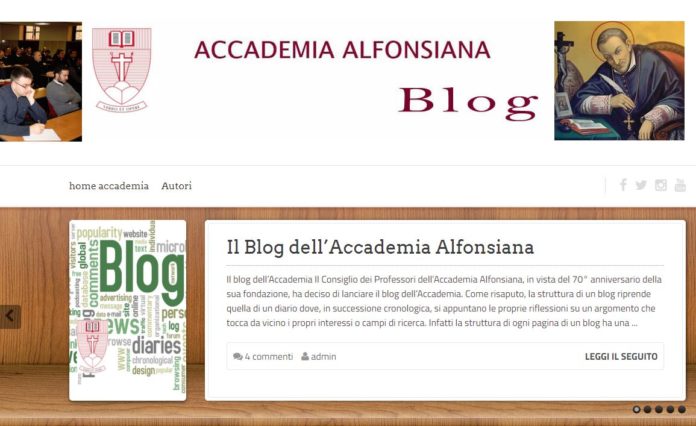Holiness is a reality that attracts and overwhelms. We would like to go into the subject starting with the papal exhortation Gaudete et Exsultate (GE -2018), but in relation to some elements of the Redemptorist spirituality, since these are in intimate relation with the Alphonsian morality.
The Pope intends a fundamental renewal in the lifestyle of Christians so that it can be credible and communicable as real good news for the world today. It seems that Francis shows a clear awareness that without a new way of facing the challenges of the present (praxis) and of discerning them in depth, to live them in daily life, in a new and alternative way of life (spirituality), nothing that is will have a real long-term transformative power. To do this, he proposes the mood of “joy”, the source and expression of the Christian life. It does so from two theological keys: the priority of grace and the directionality of the fundamental teaching of Jesus.
To retrace this design, the first thing is to leave false guarantees, fears, and closures, and let ourselves be carried away by the dynamics of grace, so that it leads us to feel, see, discern and act in accordance with its impulse and its directionality. That is why the Pope invites everyone to this process: “let the grace of your Baptism bear fruit on a path of holiness” (GE. 15). We can already guess that holiness is not a state, neither static nor ideal, but a way of life that makes life fruitful. It is about letting the best emerge, to improve each one and the social reality (see GE. 11). The Pope often addresses each one directly (see GE. 14; 25; 34). At the same time, it speaks of a sanctity what happens in the heart of a people, of a community, because “sanctification is a communitarian path” (GE 141). It is personal but also it is communal, nobody is or becomes a saint regardless of others or at the expense of others, but together with others (see GE. 6). The Pope’s objective is to remember that “we are all called to be saints” (GE 14) and “each one on his way” (GE 11). This is very Alphonsian. Redemptorist spirituality is based on the conviction that all have been redeemed in Christ and that missionary service is nothing more than awakening, training and accompanying people in the daily life of their lives (see GE 16; 109; 145), so that by making an option to follow the steps of the Redeemer, discover this call and be able to live it through a familial relationship with God in the practice of loving Jesus Christ (see GE. 85; 111; 145).

The Redemptorists by following Jesus Christ the Redeemer and continue their work of liberation in practice, have in him their configuration center. They have Mary as a model of discipleship, the perfect figure of freedom and liberation. They have as their primary source the Word, the first and decisive book of spirituality. And finally, they have “the Practice of loving Jesus Christ” as their main objective. To carry out this program of life, in the dedication and mission (consecration) of each day, they have four channels through which Redemptorist spirituality and, consequently, moral theology is concretized: 1) Jesus Christ the Redeemer; 2) the mission; 3) the prayer; and 4) The preferential option for the most abandoned poor. We cannot deepen these channels, but they already indicate a way forward. We conclude with a note from St. Alphonsus: “All holiness consists in loving God, and all love for God consists in doing His will” (Practice of Loving Jesus Christ, Nos. 21-22)
Fr. Antonio Gerardo Fidalgo, CSsR
Other articles of the Alphonsian Academy Blog:
· The human being, the concrete assistant, is the absolute moral of Bioethics
KOWALSKI
· The Politics of Migration: A Total Eclipse of Faith by Ideology?
MCKEEVER
· Scandals do not hurt until the scandals do not hurt …
FIDALGO






